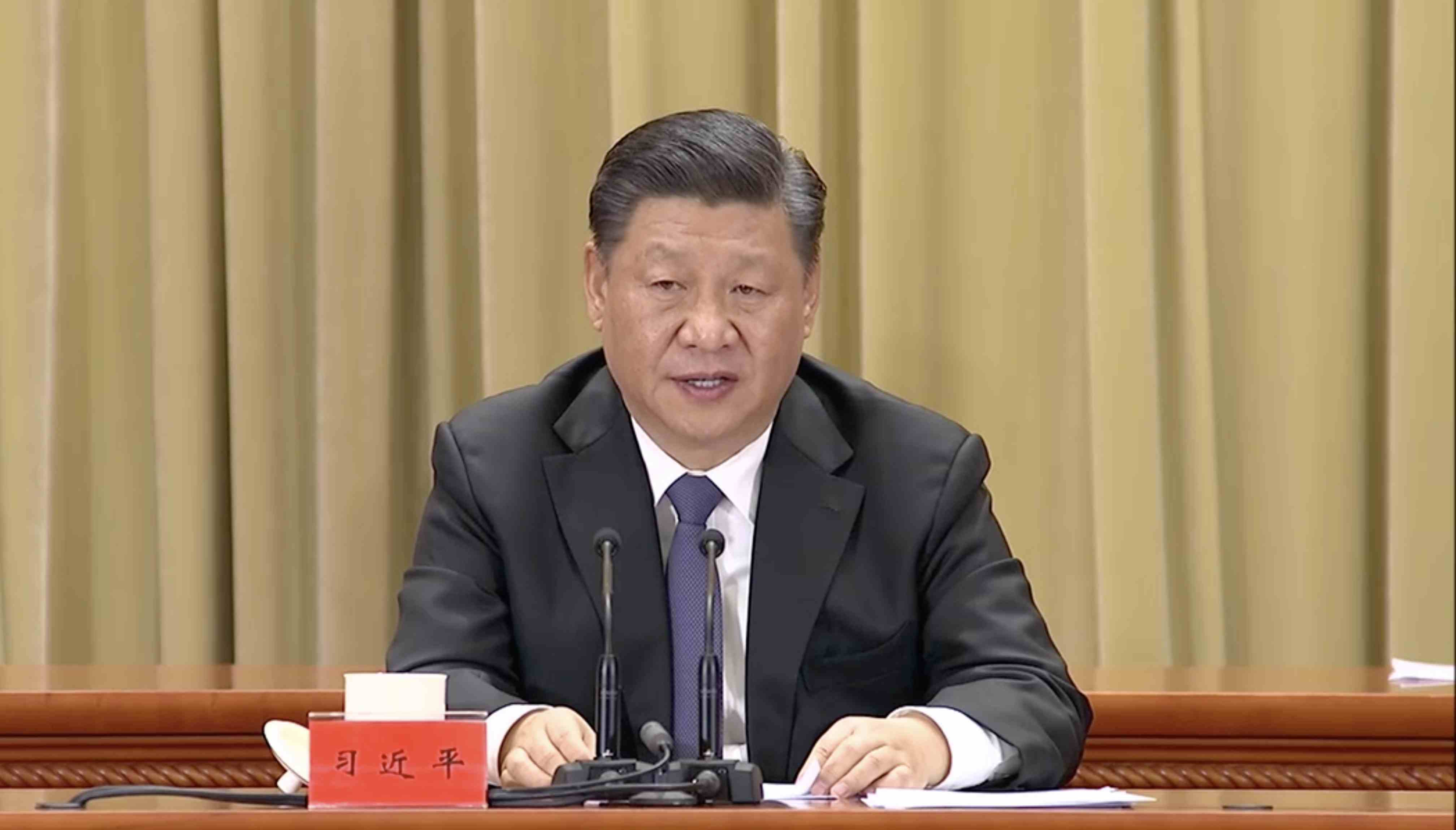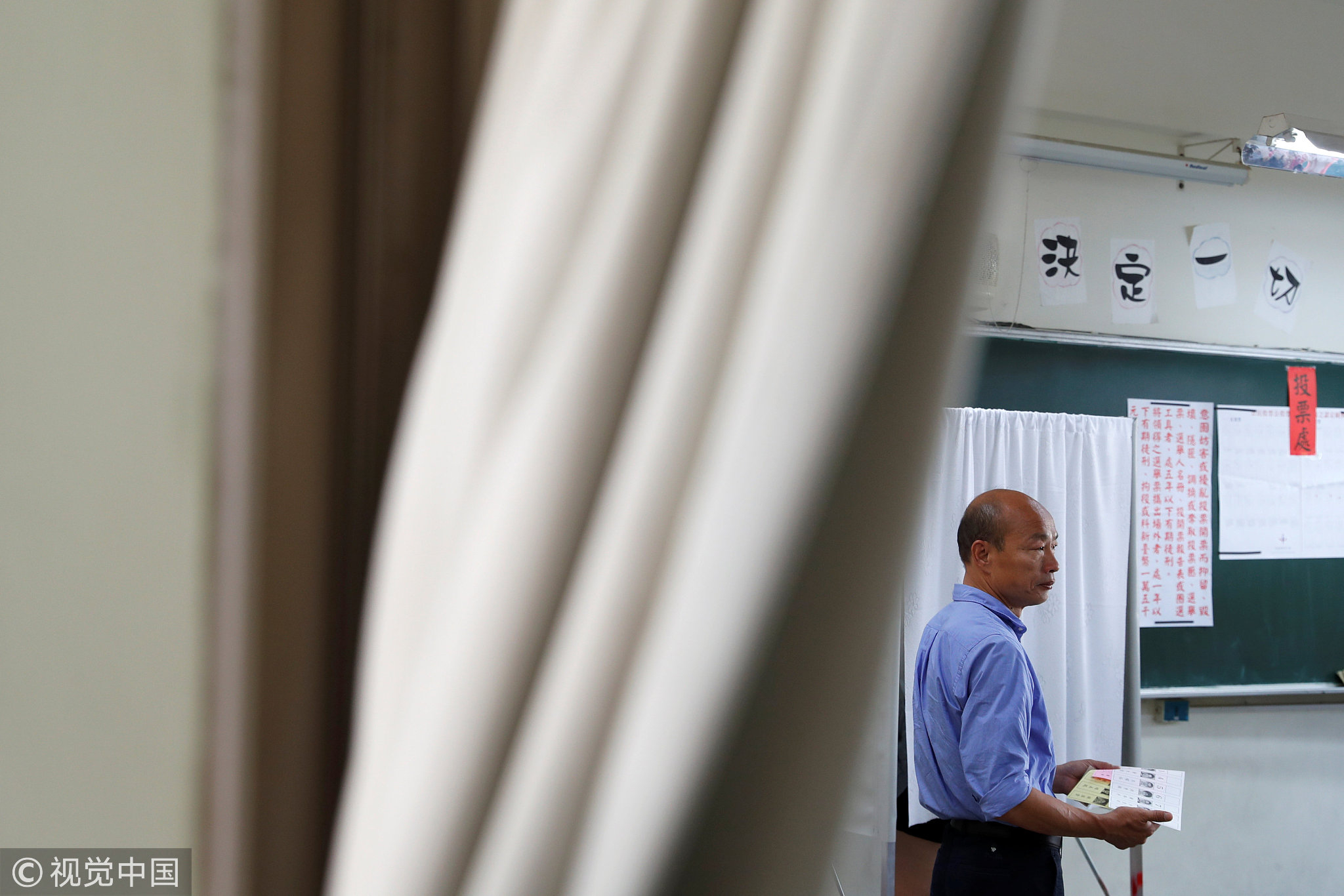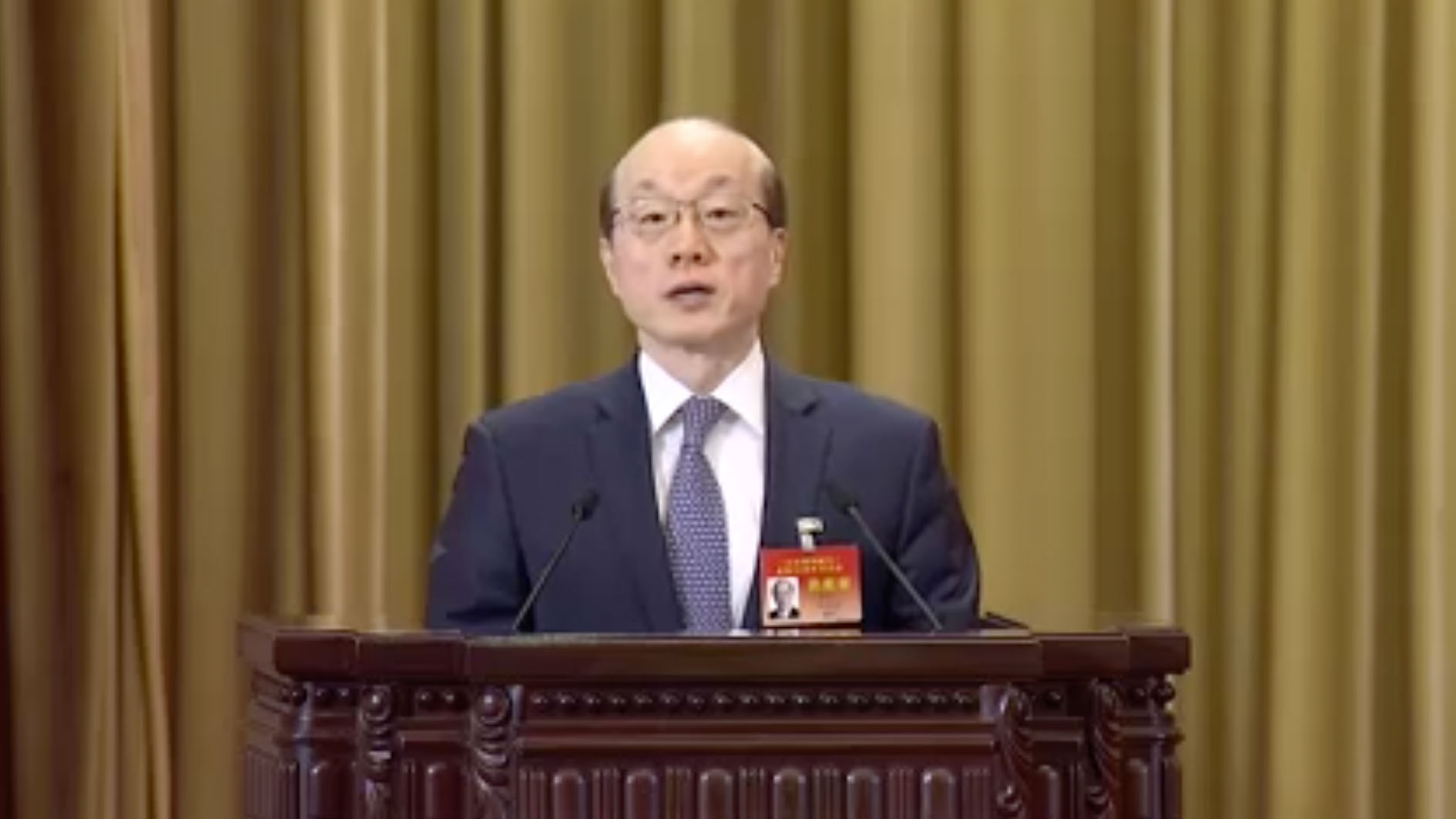
Opinions
22:19, 04-Jan-2019
Opinion: President Xi proposes a pragmatic roadmap for reunification
Updated
21:24, 07-Jan-2019

Editor's note: The following is an edited translation of an article from the Chinese-language website "Commentaries on International Affairs", first published on China Plus on January 4, 2019.
At the beginning of the New Year, a commemoration was held in Beijing for the 40th anniversary of the "Message to Compatriots in Taiwan" issued by the National People's Congress.
Chinese President Xi Jinping spoke about cross-Straits relations, stressing that China's reunification is the historical mission of the Communist Party of China, the government of China, and the Chinese people. He called on fellow Chinese people in Taiwan, on the mainland, and elsewhere in the world to explore "one country, two systems" as a way to reunify Taiwan with the mainland.

Opposition Nationalist Kuomintang Party (KMT) Kaohsiung mayoral candidate Han Kuo-yu casts his ballots at a polling station during local elections and referendum on same-sex marriage, in Kaohsiung, Taiwan, November 24, 2018. /VCG Photo
Opposition Nationalist Kuomintang Party (KMT) Kaohsiung mayoral candidate Han Kuo-yu casts his ballots at a polling station during local elections and referendum on same-sex marriage, in Kaohsiung, Taiwan, November 24, 2018. /VCG Photo
He also urged them to adhere to the one-China principle and proposed that Chinese people on both sides of the Straits advance the cause of peaceful reunification.
President Xi's proposals show that the Chinese mainland is willing to hold consultations on an equal basis with the people in Taiwan using a "one country, two systems" approach. And it is a sign of the mainland's willingness to deepen cross-Straits integration in the fields including economics, culture, medical care, and social security to create a broad space for peaceful reunification.
At the same time, President Xi warned that no space will be left for separatist activities. The Taiwan question originated, he said, from national weakness and disorder, but it will definitely end with national rejuvenation.
The commemoration of the "Message to Compatriots in Taiwan" came shortly after China celebrated another 40th anniversary of the country's reform and opening up.
These four decades have seen tremendous changes in China and its place in the world. It has become the home of the world's second-largest economy, the holder of the world's largest foreign exchange reserves, and is the largest trading partner for more than 120 countries. And in recent years, it has contributed more than 30 percent of the growth in the global economy. As China returns to its place among the world's traditional major powers, the solution of the Taiwan question is naturally high on its national agenda.
During the eight years when Ma Ying-jeou governed Taiwan, the island's authorities recognized and abided by the 1992 Consensus, which holds that both sides of the Straits belong to the same China. At that time, cross-Straits relations were stable, and there were closely knit economic and trade ties. The city of Kaohsiung in southern Taiwan benefited from this state of affairs: Agricultural and fishery products were sold to the mainland, and mainland tourists flocked to Kaohsiung.
Since the Democratic Progressive Party (DPP), which has pursued a policy of secession, assumed power two years ago, things have begun to change. Because the DPP does not accept the "one China" principle, the political trust based on the 1992 Consensus was destroyed, and the city has suffered for it.
Trade slowed for businesses in the city, the number of mainland tourists has fallen, and its bustling prosperity has greatly dimmed. And last year's elections for local officials in Taiwan hit the DPP hard, with 15 cities and counties on the island swinging to the Kuomintang. The DPP only held onto six cities and counties, as Kuomintang legislators won 19 elections for the heads of 22 county and city legislatures.
But the reality is, no matter who is in power in Taiwan, in the long run, Taiwan's development is inseparable from the development of the mainland. This is why President Xi said it was necessary to actively promote the institutionalization of cross-Straits economic cooperation and the building of a common market.
07:40

With this as the goal, the two sides could, for example, build new links between Taiwan's Kinmen and Matsu islands and the mainland's coastal Fujian Province in the form of water, electricity, and gas supply lines, and through the building of bridges. Reunification will, to a certain extent, be a natural consequence from the ties brought about by this infrastructure.
In his five-point proposal, President Xi makes it clear that he believes the "one country, two systems" approach for Taiwan's reunification with the mainland is the best way forward. The political systems on the two sides are different, as are the systems in the mainland and Hong Kong and Macao.
A unique "one country, two systems" approach to reunification across the Taiwan Straits would need to ensure that any agreement protects China's national sovereignty and security and at the same time respects the lifestyles, interests, and social systems enjoyed by the people in Taiwan.
Four decades ago, Taiwan's economic development far exceeded that of the Chinese mainland. Today, the mainland, with its growing political, economic, and military strength still has the aspiration, patience, and confidence for peaceful reunification with Taiwan. This is why President Xi mapped out his pragmatic plan for China's peaceful unification and called for people on both sides of the Straits to grasp the opportunity to create a shared future together.
(If you want to contribute and have specific expertise, please contact us at opinions@cgtn.com.)

SITEMAP
Copyright © 2018 CGTN. Beijing ICP prepared NO.16065310-3
Copyright © 2018 CGTN. Beijing ICP prepared NO.16065310-3